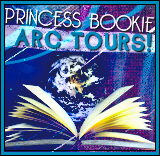 About the Author
About the AuthorMichelle Moran was born in the San Fernando Valley, CA. She took an interest in writing from an early age, purchasing Writer's Market and submitting her stories and novellas to publishers from the time she was twelve. When she was accepted into Pomona College she took as many classes as possible in British Literature, particularly Milton, Chaucer, and the Bard. Not surprisingly, she majored in English while she was there. Following a summer in Israel where she worked as a volunteer archaeologist, she earned an MA from the Claremont Graduate University.
Michelle has traveled around the world, from Zimbabwe to India, and her experiences at archaeological sites were what inspired her to write historical fiction. A public high school teacher for six years, Michelle Moran is currently a full-time writer living in California with her husband. She is agented by Anna Ghosh of Scovil Chichak Galen Literary Agency.
Guest Posts
Why Cleopatra's Daughter?
It began with a dive. Not the kind of dive that people take into swimming pools, but the kind where you squeeze yourself into a wetsuit and wonder just how tasty your rump must appear to passing sharks now that it looks exactly like an elephant seal. My husband and I had taken a trip to Egypt, and at the suggestion of a friend, we decided to go to Alexandria and do a dive to see the remains of Cleopatra’s underwater city. Let it be known that I had never done an underwater dive before, so after four days with an instructor (and countless questions: Will there be sharks? How about jellyfish? If there is an earthquake, what happens underwater?) we were ready for the real thing.
We drove to the Eastern Harbor in Alexandria. Dozens of other divers were already there, waiting to see what sort of magic lay beneath the waves. I wondered if the real thing could possibly live up to all of the guides and brochures selling this underwater city, lost for thousands of years until now. Then we did the dive, and it was every bit as magical as everyone had promised. You can see the rocks which once formed Marc Antony’s summer palace, come face to face with Cleopatra’s towering sphinx, and take your time floating above ten thousand ancient artifacts, including obelisks, statues, and countless amphorae. By the time we had surfaced, I was Cleopatra-obsessed. I wanted to know what had happened to her city once she and Marc Antony had committed suicide. Where did all of its people go? Were they allowed to remain or were they killed by the Romans? What about her four children?
It was this last question which surprised me the most. I had always believed that all of Cleopatra’s children had been murdered. But the Roman conqueror Octavian had actually spared the three she bore to Marc Antony: her six-year-old son, Ptolemy, and her ten-year-old twins, Alexander and Selene. As soon as I learned that Octavian had taken the three of them for his Triumph in Rome, I knew at once I had my next book. This is how all of my novels seem to begin – with a journey, then an adventure, and finally, enormous amounts of research for what I hope is an exciting story.
Life and Libraries in the Classical Age
Aside from the fact that the female characters manage to spend much of their time onscreen parading around in the buff, HBO’s Rome series actually comes quite close to what life would have been like two thousand years ago, when Julius Caesar walked the corridors of the Senate house . Certainly, some personalities were changed for television: quiet, charitable women like Octavia were turned into sex-crazed teenagers more concerned about men than doing good in the world (as the historical Octavia was.) Yet the scenery and day-to-day life which were depicted were remarkably accurate.
Life in ancient Rome had many of the little luxuries that we associate with the modern world. Baths were to be found in every city, and public toilets were viewed as a necessity. The toilets depicted in Rome are copies of those discovered in Pompeii, where those caught short could find a long stretch of latrines (much like a long bench with different sized holes) and relieve themselves next to their neighbor. Shops sold a variety of wigs, and women could buy irons to put long curls their hair. For the rain, there were umbrellas, and for the sun, parasols. Houses for the wealthy were equipped with running water and were often decorated quite lavishly, with elaborate mosaics, painted ceilings, and plush carpets.
In the markets, the eager shopper could find a rich array of silks, along with linen and wool. You could also find slaves, and in this, Roman times certainly differ from our own society. While some men like Cicero decried it, one in three people were enslaved. Most of these slaves came from Greece, or Gaul (an area roughly comprising modern France). Physical and sexual abuse were rampant (of both males and females), and the misery caused by this led desperate men like Spartacus to risk death for freedom.
For those few who were free and wealthy, however, life in Rome provided nearly endless entertainments. As a child, there were dolls and board games to be played with, and as an adult, there was every kind of amusement to be had, from the theatre to the chariot races. Even the poor could afford “bread and circuses,” which, according to Juvenal, was all the Romans were really interested in.
For those more academic minded, however, there were libraries. Although I don’t portray this in Cleopatra’s Daughter, libraries were incredibly noisy places. The male scholars and patrons read aloud to themselves and each other, for nothing was ever read silently - the Romans believed it was impossible! Other cities were renowned for their learning, too: Pergamum (or Pergamon) was the largest and grandest library in the world. Built by the Greeks, Pergamum became Roman property when Greece was captured and many of its people enslaved. The library was said to be home to more than 200,000 volumes, and it is was in Pergamum that the history of writing was forever changed.
Built by Eumenes II, Pergamum inspired great jealousy in the Egyptian Ptolemies, who believed that their Library of Alexandria was superior. In order to cripple this Greek rival (and also because of crop shortages), Egypt ceased exporting its coveted papyrus, on which all manuscripts were written. Looking for an alternative solution, the Library of Pergamum began using parchment, or charta pergamena. For the first time, manuscripts were now being written on thin sheets of calf, sheep or goat’s skin. The result of this change from papyrus to parchment was significant. Now, knowledge could be saved by anyone with access to animal hide, which was ubiquitous. Manuscripts (although still quite rare) were now available to more people. Alas, so impressive was this vast Pergamese library of parchment that Cleopatra asked Marc Antony to ship its entire contents to her as a wedding gift. This transfer marked the end of Pergamum’s scholarly dominance, and is the reason why, today, we remember Alexandria as possessing the ancient world’s greatest library.




































0 comments:
Post a Comment